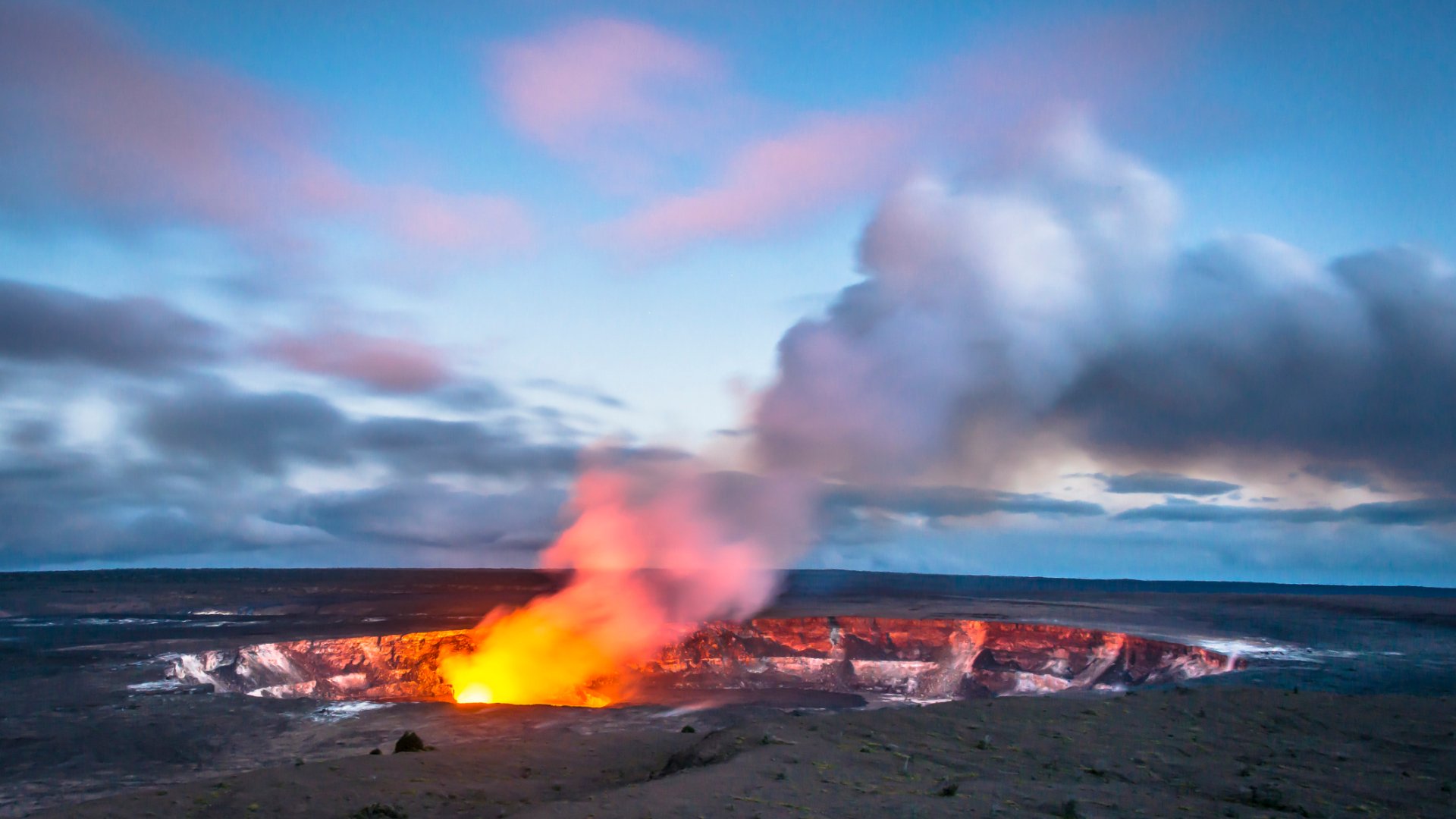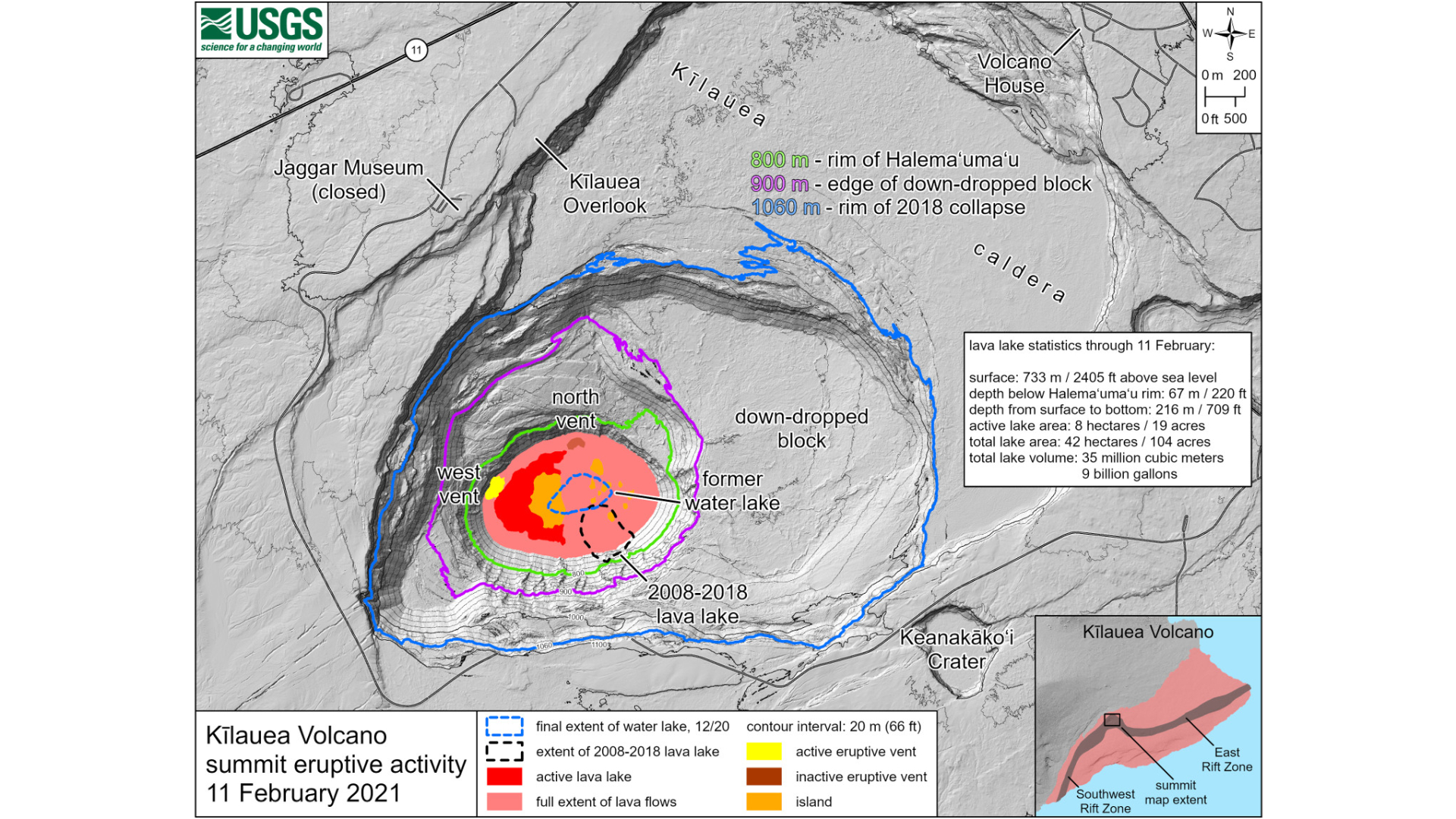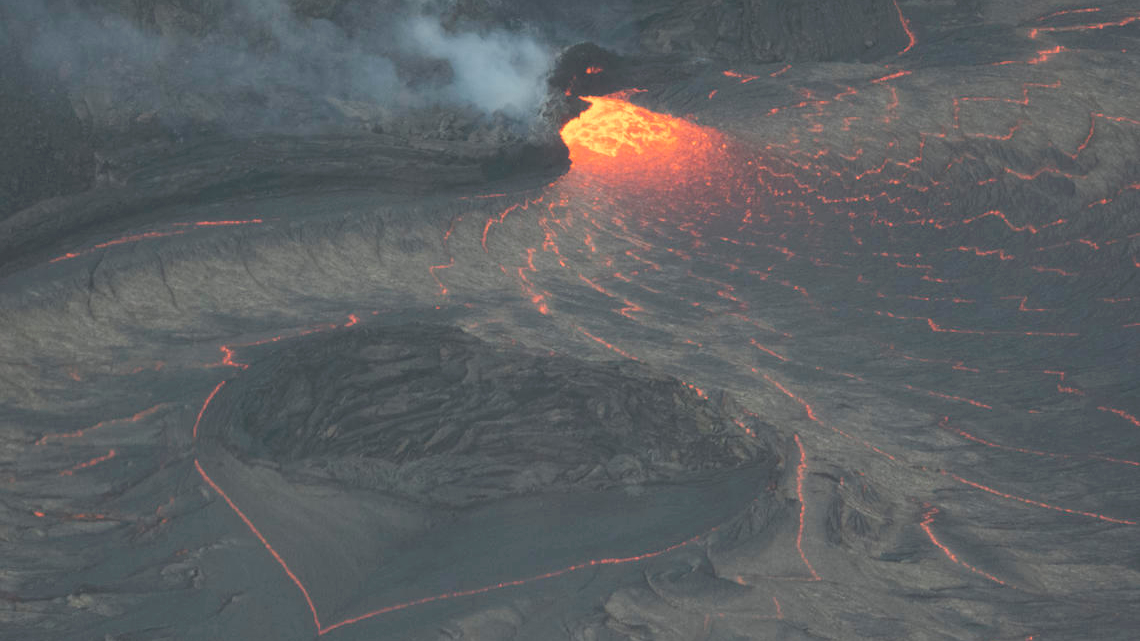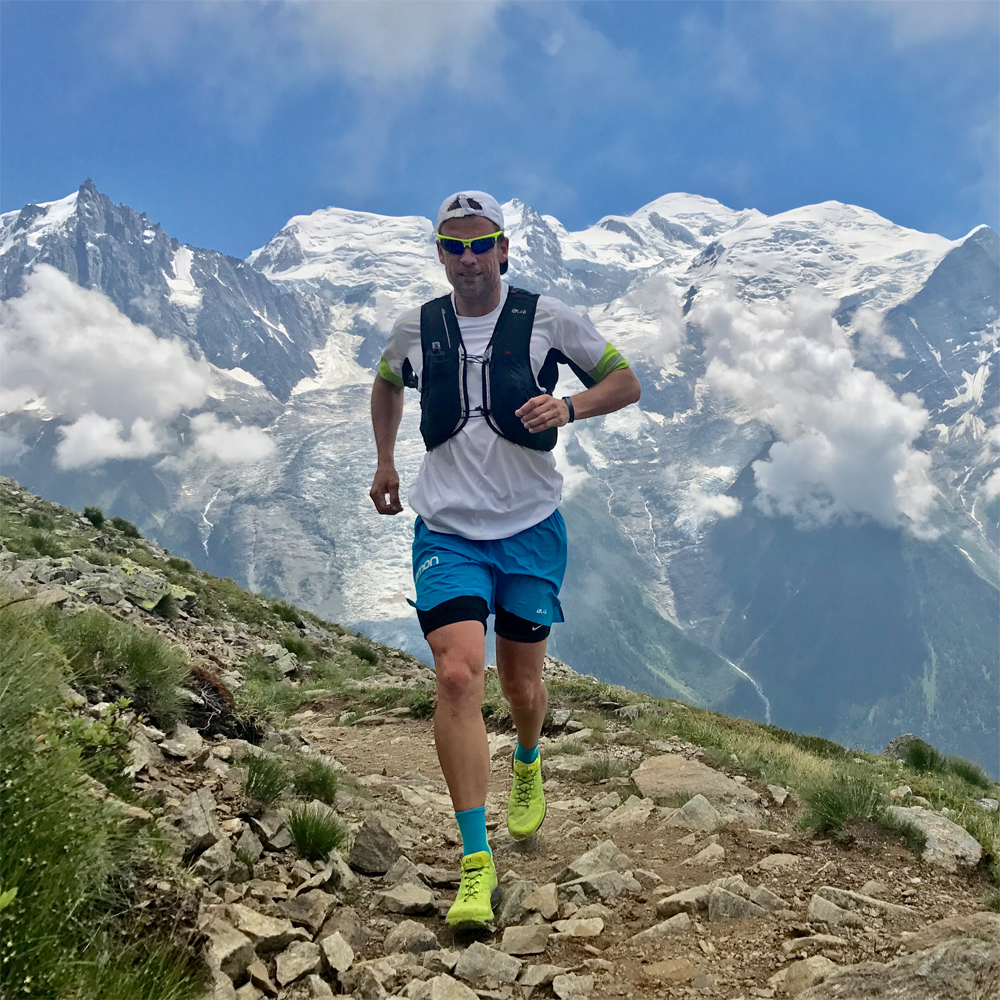Erupting volcano in Hawaii could spark local tourism
The Kilauea volcano on the Big Island began erupting in December for the first time in more than two years

Active again for nearly two months, the Kilauea volcano on the Big Island of Hawaii continues to ooze red-hot lava after a two-year dormancy from its previous eruption. The natural phenomenon is also giving a much-needed spark to Hawaii’s dormant tourism industry.
It all started on December 20, when lava spewed from a fissure in the northwest wall of Halemaʻumaʻu crater and cascaded into the deepest part of the crater, boiling away a water lake. As of February 15, there was a growing lava lake more than 700 feet deep and plenty of reason to think the activity will continue.
Gas emissions and seismic activity at the summit remain elevated. Geologists – equipped with specialized safety gear and PPE – monitor the eruption from within the closed area of Hawaii Volcanoes National Park with NPS permission.
- Want to explore Hawaii's National Parks? Make sure you've got the best hiking boots
- Volcanoes are just one of the many transformative powers of the outdoors
- Experience the outdoors in peace at the least busy US National Parks
The scientists collect detailed data to assess hazards and understand how the eruption is evolving at Kīlauea's summit, all of which are shared with the National Park Service and emergency managers. Access to this hazardous area is by permission from, and in coordination with, Hawaii Volcanoes National Park.
Near-real time webcam views of the lava lake can be found on the USGS website.
Kīlauea has erupted 34 times since 1952. From 1983 to 2018, eruptive activity was nearly continuous along the volcano's East Rift Zone.
At the summit, a vent within Halema‘uma‘u hosted an active lava pond and vigorous gas plume from 2008 to 2018. During the summer of 2018, it mercilessly flowed through neighborhoods and destroyed more than 700 homes. But when that ended, so did volcano-related tourism. Then pandemic hit in 2020 and it was lights out for most Big Island tourism activity.
Advnture Newsletter
All the latest inspiration, tips and guides to help you plan your next Advnture!

At this moment, there are no signs of sudden decline or dangerous escalation of the eruption, according to Matt Patrick, a research geologist with the US Geological Survey (USGS). The USGS hypothesizes the eruption will stay stable in the short term, with the lava remaining within the cozy confines of the summit crater, safe for all to experience.
But there’s also a hope that nature’s most glorious fireworks could produce one of its famous nighttime light shows and once again send hot lava streaming into the Pacific Ocean. Which means that, oddly enough, the return of the hot, potentially destructive lava has brought hope that 2021 will be a better year than 2020 in tourism circles, according to a story on CNN.com.
Hawaii Volcano Vacations, a vacation rental agency near Kilauea Crater, has reported an uptick in its bookings and length of stay since the eruption started. Jason Cohn, president of Hawaii Forest & Trail, an adventure tour company, has had a surge of business over the past two months after being shut down because of a lack of demand during Covid-19. It’s the same story at Paradise Helicopters, which re-open their pandemic-closed Hilo location thanks to increased demand for chopper rides over Kilauea.

And, not surprisingly, Hawaii Volcanoes National Park's visitation has more than doubled from its 2020 pre-eruption levels.
For Ross Birch, executive director of the Island of Hawaii Visitors Bureau, the new eruption is, at the moment, a great opportunity and boost for the state's tourism industry, which is down 75% overall from the previous year.
"It's a breath of fresh air from what we've been going through," Birch told CNN.
Brian is an award-winning journalist, photographer and podcaster who has written for Runner’s World, The Times, Outside, Men’s Journal, Trail Runner, Triathlete and Red Bulletin. He's also the author of several books, including Kicksology: The Hype, Science, Culture and Cool of Running Shoes. He lives in Boulder, Colorado, and loves to run, bike, hike, camp, ski and climb mountains. He has wear-tested more than 1,500 pairs of running shoes, completed four Ironman triathlons, as well as numerous marathons and ultra-distance running races.

